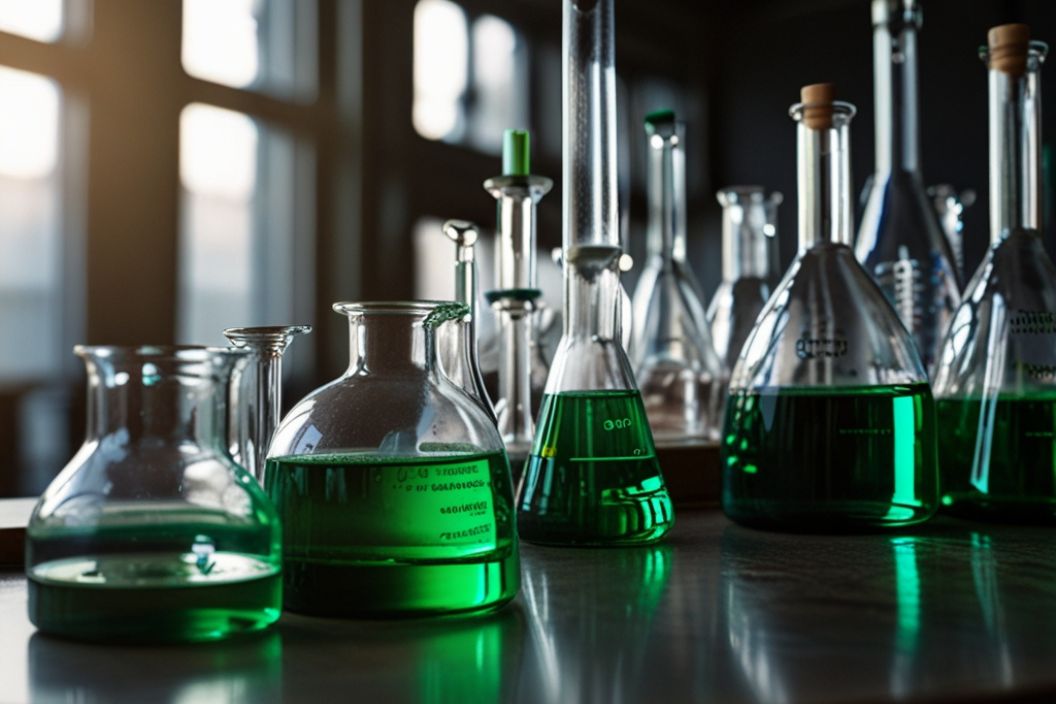The chemical process industry (CPI) plays a pivotal role in the global economy, producing essential materials and products used in various sectors. However, the environmental impact of chemical manufacturing has raised significant concerns over the years. As a result, there has been a growing emphasis on sustainable practices within the industry, with green chemistry leading the charge. In this blog, we will explore sustainable practices in the CPI, focusing on green chemistry and other innovative approaches that go beyond traditional methods.
What is Green Chemistry?
Green chemistry, also known as sustainable chemistry, is a scientific approach that seeks to design chemical products and processes that reduce or eliminate the use and generation of hazardous substances. The principles of green chemistry aim to create safer, more efficient, and environmentally friendly chemical processes. These principles include:
- Prevention: It is better to prevent waste than to treat or clean up waste after it is formed.
- Atom Economy: Synthetic methods should be designed to maximize the incorporation of all materials used in the process into the final product.
- Less Hazardous Chemical Syntheses: Whenever practicable, synthetic methods should be designed to use and generate substances that possess little or no toxicity to human health and the environment.
- Designing Safer Chemicals: Chemical products should be designed to affect their desired function while minimizing their toxicity.
- Safer Solvents and Auxiliaries: The use of auxiliary substances (solvents, separation agents, etc.) should be made unnecessary wherever possible and, when used, innocuous.
- Design for Energy Efficiency: Energy requirements should be recognized for their environmental and economic impacts and should be minimized. Synthetic methods should be conducted at ambient temperature and pressure.
- Use of Renewable Feedstocks: A raw material or feedstock should be renewable rather than depleting whenever technically and economically practicable.
- Reduce Derivatives: Unnecessary derivatization (use of blocking groups, protection/deprotection, temporary modification of physical/chemical processes) should be minimized or avoided if possible.
- Catalysis: Catalytic reagents (as selective as possible) are superior to stoichiometric reagents.
- Design for Degradation: Chemical products should be designed so that at the end of their function they break down into innocuous degradation products and do not persist in the environment.
- Real-time analysis for Pollution Prevention: Analytical methodologies need to be further developed to allow for real-time, in-process monitoring and control prior to the formation of hazardous substances.
- Inherently Safer Chemistry for Accident Prevention: Substances and the form of a substance used in a chemical process should be chosen to minimize the potential for chemical accidents, including releases, explosions, and fires.
Sustainable Practices Beyond Green Chemistry
While green chemistry forms the foundation of sustainable practices in the CPI, other innovative approaches are being implemented to further enhance sustainability.
1. Process Intensification
Process intensification involves the development of chemical manufacturing processes that are significantly more efficient and compact than traditional methods. By integrating multiple processing steps into a single unit or minimizing the size and energy requirements of equipment, companies can reduce resource consumption and environmental impact.
2. Circular Economy
The circular economy model aims to close the loop on product life cycles through recycling, reuse, and sustainable design. In the CPI, this involves designing products and processes that facilitate the recovery and reuse of materials, thereby minimizing waste and reducing the need for virgin resources.
3. Biotechnology and Bioprocessing
Biotechnology and bioprocessing leverage biological systems and organisms to produce chemicals in a more sustainable manner. This includes using microbes or enzymes to catalyze reactions, producing bio-based chemicals from renewable resources, and developing biodegradable materials.
4. Energy Efficiency and Renewable Energy
Improving energy efficiency in chemical processes and integrating renewable energy sources are crucial for reducing the carbon footprint of the CPI. This can involve optimizing process conditions, implementing energy recovery systems, and using renewable energy sources such as solar, wind, and biomass.
5. Water Management
Water is a critical resource in chemical manufacturing. Sustainable water management practices include reducing water consumption, recycling and reusing process water, and treating wastewater to minimize environmental impact.
6. Advanced Analytical Techniques
Advanced analytical techniques, such as real-time monitoring and process control, allow for more precise management of chemical processes. This helps in minimizing waste, optimizing resource use, and ensuring safer and more efficient operations.
Case Studies of Sustainable Practices in the CPI
1. BASF’s Verbund Concept
BASF, one of the largest chemical companies in the world, has implemented the Verbund concept, which involves the integration of production processes to maximize efficiency and minimize waste. By using by-products of one process as raw materials for another, BASF reduces resource consumption and environmental impact.
2. Dow Chemical’s Sustainability Goals
Dow Chemical has set ambitious sustainability goals, including reducing greenhouse gas emissions, conserving water, and innovating for safer products. They have implemented various green chemistry principles and sustainable practices across their operations to achieve these goals.
3. DuPont’s Bio-based Products
DuPont has been a leader in developing bio-based products, such as biofuels, bioplastics, and bio-based chemicals. By using renewable resources and biotechnological processes, DuPont is reducing reliance on fossil fuels and minimizing environmental impact.
Final Remarks
Sustainable practices in the chemical process industry are essential for mitigating environmental impact and ensuring long-term viability. Green chemistry provides a strong foundation for these efforts, but it is important to go beyond traditional methods and embrace innovative approaches such as process intensification, circular economy, biotechnology, energy efficiency, and advanced analytical techniques. By integrating these practices, the CPI can achieve greater sustainability and contribute to a healthier planet.
By adopting these sustainable practices, the chemical process industry can continue to thrive while minimizing its environmental footprint. The future of the CPI lies in its ability to innovate and adapt, ensuring that progress is aligned with the principles of sustainability.

